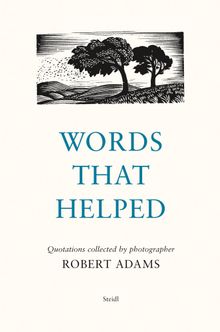| ||||||||||||||||||||||||||||||||||||||||||||
PHOTOGRAPHY MONOGRAPHS
|
|
in stock $40.00 Free Shipping UPS GROUND IN THE CONTINENTAL U.S. |
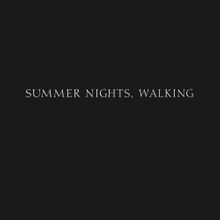 Robert Adams: Summer Nights, Walking
Robert Adams: Summer Nights, Walking
Published by Steidl.
Text by Robert Adams, William Blake, Emily Dickinson.
In the mid-1970s, Robert Adams (born 1937) began recording nocturnal scenes near his former home in Longmont, Colorado. Illuminated by moonlight and streetlamp, suburban houses, roads, sidewalks and fields seemed utterly transfigured. “What attracted me to the subjects at a new hour,” observed Adams, “was the discovery then of a neglected peace.”
Twenty-five years after first publishing a sequence of these pictures in 1985 as Summer Nights, he revisited his project, amending its title while completely resequencing and adding to its contents to create a more disquieting and thus more accurate reflection of his experience. Hailed as a new classic, Summer Nights, Walking went out of print soon after it was published in 2009. This sensitively expanded edition, printed with the same exquisite care as the original, makes this revered body of work available to a new audience.
PUBLISHER
Steidl
BOOK FORMAT
Clth, 10 x 10 in. / 80 pgs / 69 bw.
PUBLISHING STATUS
Pub Date 12/19/2023
Active
DISTRIBUTION
D.A.P. Exclusive
Catalog: SPRING 2020 p. 37
PRODUCT DETAILS
ISBN 9783958296848 TRADE
List Price: $55.00 CAD $79.00
AVAILABILITY
Out of stock
STATUS: Out of stock Temporarily out of stock pending additional inventory. |
 Robert Adams: Eden
Robert Adams: Eden
Published by Steidl.
In the fall of 1968, Robert Adams (born 1937), a college English teacher, found himself inexplicably drawn to photograph a nondescript area south of Colorado Springs whose most notable feature was a truck stop off the interstate. Unflinching in their descriptiveness, yet embodying a mysteriously radiant peace, the pictures Adams made of the otherwise graceless site confirmed for him a vital new way of relating to the world. He transformed this revelation into The New West, the book that established both his photographs and his subject—the contemporary landscape of the American frontier—as matters of wider consequence.
This pivotal early series was re-edited to include previously unpublished pictures from the period. First published in 1999 and long a rarity, Eden has now been made available again by Steidl.
PUBLISHER
Steidl
BOOK FORMAT
Clth, 9 x 8 in. / 48 pgs / 21 bw.
PUBLISHING STATUS
Pub Date 12/12/2023
Active
DISTRIBUTION
D.A.P. Exclusive
Catalog: SPRING 2020 p. 98
PRODUCT DETAILS
ISBN 9783958296817 TRADE
List Price: $55.00 CAD $79.00
AVAILABILITY
In stock
in stock $55.00 Free Shipping UPS GROUND IN THE CONTINENTAL U.S. |
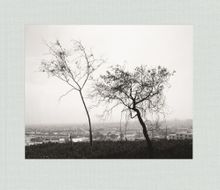 Robert Adams: Los Angeles Spring
Robert Adams: Los Angeles Spring
Published by Steidl.
Text by Robert Adams.
Having lived in Southern California during his university years, Robert Adams (born 1937) returned to photograph the Los Angeles Basin in the late 1970s and early 1980s, concentrating on what was left of the citrus groves, eucalyptus and palm trees that once flourished in the area. The pictures, while foreboding, testify to a verdancy against the odds. Featuring sumptuous quadratone plates, this greatly expanded and revised edition of a title originally published in 1986 reinvigorates one of Adams’ most influential and admired bodies of work.
“The Los Angeles he reveals here abounds in attenuated beauty, with eucalyptus, palm and orange trees holding out against the forces of asphalt and concrete. As in all of Mr. Adams’ work, the pictures have an idiosyncratic beauty and they serve as partial solace for the disharmonies they depict.” –Andy Grundberg, New York Times Book Review
PUBLISHER
Steidl
BOOK FORMAT
Slip, hbk, 15.5 x 13.5 in. / 120 pgs / 56 bw.
PUBLISHING STATUS
Pub Date 10/3/2023
Active
DISTRIBUTION
D.A.P. Exclusive
Catalog: SPRING 2020 p. 98
PRODUCT DETAILS
ISBN 9783958296824 TRADE
List Price: $195.00 CAD $275.00
AVAILABILITY
Out of stock
STATUS: Out of stock Temporarily out of stock pending additional inventory. |
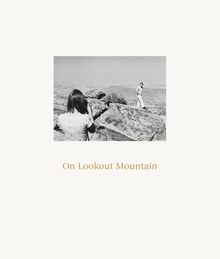 Robert Adams: On Lookout Mountain
Robert Adams: On Lookout Mountain
Published by Steidl.
Text by Robert Adams.
The view from Lookout Mountain, west of Denver, is of natural forms and our imprint on them, of the timeless and the passing. Generations have made their way there to find perspective on the city and the plains beyond.
Robert Adams (born 1937) photographed from the overlook in 1970, returning there in 1984. For this oversized volume, he has assembled a selection of views, by him and by others, that document a complex location that inspires both hope and despair.
PUBLISHER
Steidl
BOOK FORMAT
Clth, 11 x 13 in. / 40 pgs / 4 color / 17 bw.
PUBLISHING STATUS
Pub Date 12/12/2023
Active
DISTRIBUTION
D.A.P. Exclusive
Catalog: SPRING 2020 p. 98
PRODUCT DETAILS
ISBN 9783958296831 TRADE
List Price: $55.00 CAD $79.00
AVAILABILITY
In stock
in stock $55.00 Free Shipping UPS GROUND IN THE CONTINENTAL U.S. |
 Robert Adams: Sea Stone
Robert Adams: Sea Stone
Published by Fraenkel Gallery.
For more than 50 years, ever since his landmark photobook The New West, Robert Adams (born 1937) has numbered among America’s foremost modern photographers and chroniclers. Here, he returns to the landscape near his home on the Oregon coast, presenting photographs largely made on Nehalem Spit, a four-mile stretch of sand, seagrass and pines that divides the Pacific Ocean from Nehalem Bay. Recording changing light on the land and the sea, the black-and-white photographs, made between 2008 and 2019, and beautifully reproduced in this large-format volume, suggest questions to which Adams has often returned, about the meaning of our relationship to nature, and the precarity and brevity of our place in it.
PUBLISHER
Fraenkel Gallery
BOOK FORMAT
Hardcover, 13 x 13 in. / 56 pgs / 26 duotone.
PUBLISHING STATUS
Pub Date 5/10/2022
Active
DISTRIBUTION
D.A.P. Exclusive
Catalog: SPRING 2022 p. 92
PRODUCT DETAILS
ISBN 9781881337164 TRADE
List Price: $65.00 CAD $88.00 GBP £53.00
AVAILABILITY
Out of stock
STATUS: Out of stock Temporarily out of stock pending additional inventory. |
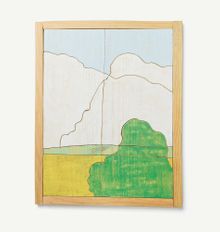 Robert Adams: The Plains, from Memory
Robert Adams: The Plains, from Memory
Published by Steidl.
Edited by Joshua Chuang. Text by Robert Adams. Quotations by Merrill Gilfillan, William Carlos Williams, Horton Foote, Agnes Martin.
In the spring of 2020, as he watched his country tested by the COVID-19 pandemic, Robert Adams (born 1937) discovered in his garage a small plank of wood that contained within its grains and textures a whole landscape of its own. This led to the creation, during a difficult time, of an unexpected series of works that drew upon Adams’ long-buried fondness for certain aesthetic qualities of stillness and austerity. Over the next few months, using scrap wood from an old bookcase, hand tools that had belonged to his father and his grandfather, and block printing ink, Adams affirmed his own basis for hope beyond the pandemic in the beautiful 23 paintings that are gathered in this elegant volume.
PUBLISHER
Steidl
BOOK FORMAT
Clth, 10.5 x 11 in. / 56 pgs / 27 color.
PUBLISHING STATUS
Pub Date 6/28/2022
Active
DISTRIBUTION
D.A.P. Exclusive
Catalog: SPRING 2022 p. 29
PRODUCT DETAILS
ISBN 9783969990179 TRADE
List Price: $45.00 CAD $62.00
AVAILABILITY
In stock
in stock $45.00 Free Shipping UPS GROUND IN THE CONTINENTAL U.S. |
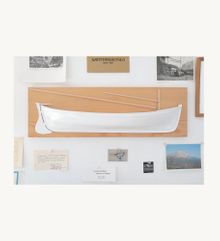 Joshua Chuang & Robert Adams: Boats, Books, Birds
Joshua Chuang & Robert Adams: Boats, Books, Birds
Published by Steidl.
Text by Robert Adams, Pattiann Rogers.
In the summer and fall of 2017, the photographer Robert Adams (born 1937) invited Joshua Chuang (born 1976)—writer, editor, Senior Curator of Photography at the New York Public Library and frequent collaborator of Adams’—to document the wooden objects that Adams has made over the years for his own consolation and pleasure.
The resulting color pictures—of half-model ships and boats, a miscellany of open books and cherished species of birds, all formed by hand from wood—have been brought together with views from the home that Adams shares with his wife Kerstin in Astoria, Oregon, to reveal a little-known aspect of his search for coherence in a fractured world.
PUBLISHER
Steidl
BOOK FORMAT
Clth, 10.5 x 11 in. / 96 pgs / 70 color.
PUBLISHING STATUS
Pub Date 6/28/2022
Active
DISTRIBUTION
D.A.P. Exclusive
Catalog: SPRING 2020 p. 99
PRODUCT DETAILS
ISBN 9783958296619 TRADE
List Price: $45.00 CAD $62.00
AVAILABILITY
In stock
in stock $45.00 Free Shipping UPS GROUND IN THE CONTINENTAL U.S. |
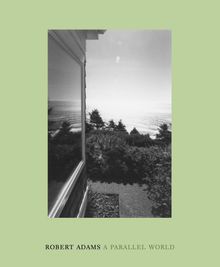 Robert Adams: A Parallel World
Robert Adams: A Parallel World
Published by Fraenkel Gallery.
Text by Robert Adams.
Inspired by a poem from Denise Levertov that finds solace in nature, Robert Adams (born 1937) presents scenes of natural beauty along the Oregon coast. The black-and-white photographs, made between 2015 and 2018, depict sand dunes and windswept trees, empty beaches and arresting skies, as well as views of the glittering Pacific Ocean seen through the windows of a home.
Adams records the light that falls on these places, and asks, by implication, what such beauty means. He writes, “The pictures establish that though we are not central, we share in a mystery.”
PUBLISHER
Fraenkel Gallery
BOOK FORMAT
Clth, 9.5 x 11.5 in. / 48 pgs / 32 bw.
PUBLISHING STATUS
Pub Date 2/9/2021
Out of stock indefinitely
DISTRIBUTION
D.A.P. Exclusive
Catalog: SPRING 2021 p. 86
PRODUCT DETAILS
ISBN 9781881337515 TRADE
List Price: $35.00 CAD $49.00 GBP £30.00
AVAILABILITY
Not available
STATUS: Out of stock indefinitely. |
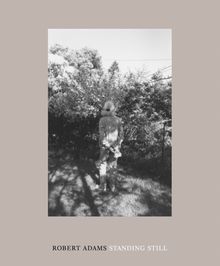 Robert Adams: Standing Still
Robert Adams: Standing Still
Published by Fraenkel Gallery.
Text by Robert Adams.
For much of his long career, Robert Adams (born 1937) has photographed the regions where he has lived, recording the transformation of the Western landscape into suburbs in Colorado, or documenting the destruction left in the wake of the timber industry in the Pacific Northwest. In recent years his focus has often turned to more intimate landscapes, as he has depicted the area around his home near the Oregon coast, where he has lived for more than 20 years.
Standing Still celebrates a small front yard—its verdancy, and the changing light and seasons throughout the year. The black-and-white photographs record a lawn and its border of shrubs and small trees; a stone bird bath, deer and Adams' wife, Kerstin. They show a landscape immersed in fog and dusted with snow, or bathed in warm sunlight. In this quiet place, “each day can be the first day,” writes Adams.
PUBLISHER
Fraenkel Gallery
BOOK FORMAT
Clth, 9.5 x 11.5 in. / 40 pgs / 28 bw.
PUBLISHING STATUS
Pub Date 2/9/2021
Active
DISTRIBUTION
D.A.P. Exclusive
Catalog: SPRING 2021 p. 86
PRODUCT DETAILS
ISBN 9781881337522 TRADE
List Price: $35.00 CAD $49.00 GBP £30.00
AVAILABILITY
In stock
in stock $35.00 Free Shipping UPS GROUND IN THE CONTINENTAL U.S. |
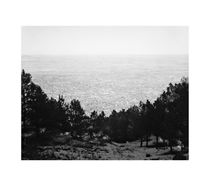 Robert Adams: From the Missouri West
Robert Adams: From the Missouri West
Published by Steidl.
Edited by Joshua Chuang.
First published in 1980, From the Missouri West marked a watershed in the history of landscape photography by reclaiming the West’s sublimity as again worthy of rigorous consideration. The link between Adams and photographers who surveyed the Western landscape more than a century earlier--in particular Timothy O’Sullivan--is drawn out in this re-edited and substantially enlarged edition of the classic book.
“Because I had lost my way in the suburbs, I decided to try to rediscover some of the landforms that had impressed our forebears,” remembers Robert Adams. “Was there remaining in the geography a strength that might help sustain us as it had them?”
PUBLISHER
Steidl
BOOK FORMAT
Hardcover, 15.5 x 13.5 in. / 132 pgs / 62 bw.
PUBLISHING STATUS
Pub Date 2/19/2019
Active
DISTRIBUTION
D.A.P. Exclusive
Catalog: FALL 2016 p. 123
PRODUCT DETAILS
ISBN 9783958291683 TRADE
List Price: $145.00 CAD $200.00
AVAILABILITY
In stock
in stock $145.00 Free Shipping UPS GROUND IN THE CONTINENTAL U.S. |
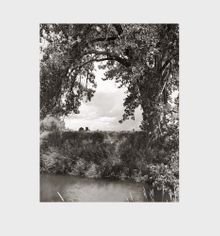 Robert Adams: Cottonwoods
Robert Adams: Cottonwoods
Published by Steidl.
Edited by Joshua Chuang. Interview by Constance Sullivan.
Trees have been a subject of lifelong engagement for acclaimed American photographer Robert Adams (born 1937), and no species has enthralled him more than the cottonwood. Revered by the Plains Indians, native cottonwoods animate the landscape unforgettably but their thirst for water and lack of commercial value have made them common targets for removal by agricultural business and housing developers. Some of Adams’ earliest pictures were of cottonwoods, and he photographed them throughout the 35 years that he lived in Colorado, beginning in 1975. Each of the black-and-white photos in the series was taken within a 50-mile radius of his home in Colorado. Originally published by the Smithsonian in 1994, this new edition of Cottonwoods has been expanded and enlarged to include an interview with Adams by Constance Sullivan.
PUBLISHER
Steidl
BOOK FORMAT
Hardcover, 9.75 x 11.75 in. / 72 pgs / 42 bw.
PUBLISHING STATUS
Pub Date 4/24/2018
Active
DISTRIBUTION
D.A.P. Exclusive
Catalog: SPRING 2016 p. 95
PRODUCT DETAILS
ISBN 9783958290969 TRADE
List Price: $50.00 CAD $67.50
AVAILABILITY
In stock
in stock $50.00 Free Shipping UPS GROUND IN THE CONTINENTAL U.S. |
 Robert Adams: 27 Roads
Robert Adams: 27 Roads
Published by Fraenkel Gallery.
Text by Robert Adams.
The road has been a central motif in the work of Robert Adams (born 1937) since the beginnings of his life as a photographer in the late 1960s. 27 Roads is the first publication to focus on this important aspect of his work, and is comprised of the artist's concise, poetic selection of images spanning almost five decades. Whether fast concrete highways, quiet cuts through dark forests, paved commercial strips or dusty tracks on a clear-cut mountainside, Adams' roads function as metaphors for solitude, connection or freedom. Adams writes, "Roads can still be beautiful. Occasionally they appear like a perfect knife slicing through a perfect apple, the better to show that two halves are one."
Robert Adams has been the recipient of Guggenheim and MacArthur Foundation fellowships, the Deutsche Börse Photography Prize and the Hasselblad Foundation International Award. His work was the subject of a major retrospective organized by the Yale University Art Gallery, which toured internationally from 2011 to 2014.
PUBLISHER
Fraenkel Gallery
BOOK FORMAT
Hardcover, 13 x 13 in. / 64 pgs / 36 duotone.
PUBLISHING STATUS
Pub Date 10/23/2018
Out of stock indefinitely
DISTRIBUTION
D.A.P. Exclusive
Catalog: FALL 2018 p. 114
PRODUCT DETAILS
ISBN 9781881337478 TRADE
List Price: $65.00 CAD $87.00 GBP £57.00
AVAILABILITY
Not available
STATUS: Out of stock indefinitely. |
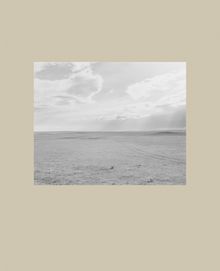 Robert Adams: Perfect Places, Perfect Company
Robert Adams: Perfect Places, Perfect Company
Published by Steidl.
Edited by Joshua Chuang.
Although he is perhaps best known for picturing a damaged or modified American geography in publications such as The New West (1974) and From the Missouri West (1980), here Adams has recorded scenes that are flawless, efficiently implying the necessity of maintaining and fighting for these spaces. A New York Times article about the photographer published in 1989 immediately comprehended the stakes of Adams’ project: “Robert Adams’ pictures are not designed to be overtly political, but like any deeply felt images they are capable of reorganizing the way we perceive the world.” With Perfect Places, Perfect Company, Adams shows us what we stand to lose.
PUBLISHER
Steidl
BOOK FORMAT
Hardcover, 2 vols, 10.25 x 12.5 in. / 104 pgs / 55 bw.
PUBLISHING STATUS
Pub Date 9/25/2018
Out of stock indefinitely
DISTRIBUTION
D.A.P. Exclusive
Catalog: FALL 2016 p. 123
PRODUCT DETAILS
ISBN 9783958291690 TRADE
List Price: $85.00 CAD $112.50
AVAILABILITY
Not available
STATUS: Out of stock indefinitely. |
 Robert Adams: Our Lives and Our Children
Robert Adams: Our Lives and Our Children
Photographs Taken Near the Rocky Flats Nuclear Weapons Plant 1979–1983
Published by Steidl.
Edited by Joshua Chuang.
One day in the early 1970s, Robert Adams (born 1937) and his wife saw from their home a column of smoke rise above the Rocky Flats Nuclear Weapons Plant, near Denver, Colorado. For an hour they watched the plume grow and experienced a sense of helplessness before what appeared to be a nuclear accident in progress. Ultimately it was announced that the fire was burning outside the plant, but Adams decided to try to picture what stood to be lost in a nuclear catastrophe. He photographed in Denver and its suburbs; the individuals shown were within hazardous proximity to the Rocky Flats Plant. The new Steidl edition of Our Lives and Our Children presents an expanded sequence that retains the potent compactness of the first edition (out of print for nearly three decades).
PUBLISHER
Steidl
BOOK FORMAT
Hardcover, 9 x 10.5 in. / 160 pgs / 104 bw.
PUBLISHING STATUS
Pub Date 4/24/2018
Active
DISTRIBUTION
D.A.P. Exclusive
Catalog: SPRING 2016 p. 95
PRODUCT DETAILS
ISBN 9783958290976 TRADE
List Price: $55.00 CAD $72.50
AVAILABILITY
In stock
in stock $55.00 Free Shipping UPS GROUND IN THE CONTINENTAL U.S. |
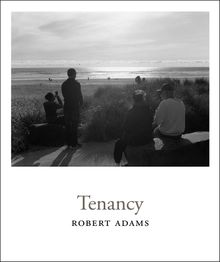 Robert Adams: Tenancy
Robert Adams: Tenancy
Published by Fraenkel Gallery.
The book’s theme of tenancy expresses the idea of “temporary possession of what belongs to another”—specifically, the natural environment. Adams’ recent photographs of the landscape reference the current and imminent threats of clearcutting, environmental degradation and natural disasters along the Northwestern coast of the US.
The black-and-white photographs include poignant images of massive tree stumps on the beach—a product of the cutting of first and early second growth—as well as shimmering stretches of coastline protected for endangered birds previously thought to have abandoned northern Oregon.
PUBLISHER
Fraenkel Gallery
BOOK FORMAT
Hardcover, 10 x 12 in. / 112 pgs / 43 bw.
PUBLISHING STATUS
Pub Date 6/27/2017
Active
DISTRIBUTION
D.A.P. Exclusive
Catalog: FALL 2017 p. 96
PRODUCT DETAILS
ISBN 9781881337454 TRADE
List Price: $65.00 CAD $87.00 GBP £57.00
AVAILABILITY
In stock
in stock $65.00 Free Shipping UPS GROUND IN THE CONTINENTAL U.S. |
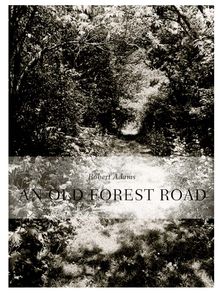 Robert Adams: An Old Forest Road
Robert Adams: An Old Forest Road
Published by Walther König, Köln.
Edited by Thomas Zander. Text by Henry David Thoreau, W.S. Merwin.
Sunlight plays a pivotal role in this sequence of pictures, as it pierces through the canopies of branches and leaves to reveal the hidden shapes and structure of the forest and the well-trodden path ahead. Shadows, too, are prominent in these pictures, adding gentle drama and contrast; they occlude the way forward, rendering it a portal to a destination unknown. These images, made between 2012 and 2013, constitute a lyrical meditation on walking and the natural world.
PUBLISHER
Walther König, Köln
BOOK FORMAT
Hardcover, 7.75 x 10.25 in. / 72 pgs / 31 bw.
PUBLISHING STATUS
Pub Date 9/26/2017
Active
DISTRIBUTION
D.A.P. Exclusive
Catalog: FALL 2017 p. 96
PRODUCT DETAILS
ISBN 9783960981237 FLAT40
List Price: $45.00 CAD $60.00
AVAILABILITY
In stock
in stock $45.00 Free Shipping UPS GROUND IN THE CONTINENTAL U.S. |
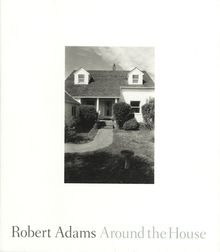 Robert Adams: Around the House
Robert Adams: Around the House
Published by Fraenkel Gallery.
PUBLISHER
Fraenkel Gallery
BOOK FORMAT
Paperback, 8.25 x 9.5 in. / 84 pgs / 71 bw.
PUBLISHING STATUS
Pub Date 2/23/2016
Out of print
DISTRIBUTION
D.A.P. Exclusive
Catalog: SPRING 2016 p. 95
PRODUCT DETAILS
ISBN 9781881337430 TRADE
List Price: $40.00 CAD $54.00 GBP £35.00
AVAILABILITY
Not available
STATUS: Out of print | 00/00/00 For assistance locating a copy, please see our list of recommended out of print specialists |
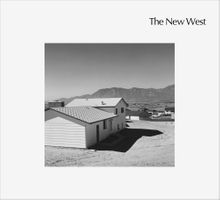 Robert Adams: The New West
Robert Adams: The New West
Published by Steidl.
Edited by Joshua Chang. Foreword by John Szarkowski. Introduction by Robert Adams.
Robert Adams (born 1937) has photographed the geography of the American West for over 40 years. His work has been widely exhibited both in Europe and the United States, including in the seminal 1975 exhibition New Topographics: Photographs of a Man-Altered Landscape. He has over 40 publications and is a recipient of a MacArthur Fellowship, the Spectrum International Prize for Photography, the Hasselblad Award, two National Endowment for the Arts fellowships and the Deutsche Börse Photography Prize.
PUBLISHER
Steidl
BOOK FORMAT
Hardcover, 9 x 10 in. / 136 pgs / 56 tritone.
PUBLISHING STATUS
Pub Date 3/22/2016
Active
DISTRIBUTION
D.A.P. Exclusive
Catalog: SPRING 2015 p. 30
PRODUCT DETAILS
ISBN 9783869309002 TRADE
List Price: $40.00 CAD $54.00
AVAILABILITY
Out of stock
STATUS: Out of stock Temporarily out of stock pending additional inventory. |
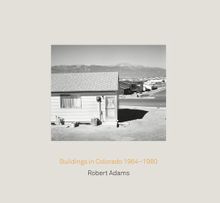 Robert Adams: Buildings in Colorado 1964-1980 & Rudolf Schwarz: Architecture and Photography
Robert Adams: Buildings in Colorado 1964-1980 & Rudolf Schwarz: Architecture and Photography
Published by Walther König, Köln.
Text by Joshua Chuang, Wolfgang Pehnt.
PUBLISHER
Walther König, Köln
BOOK FORMAT
Slip, Hardcover, 2 vols, 8 x 9 in. / 156 pgs / 106 bw.
PUBLISHING STATUS
Pub Date 6/23/2015
Out of stock indefinitely
DISTRIBUTION
D.A.P. Exclusive
Catalog: SPRING 2015 p. 109
PRODUCT DETAILS
ISBN 9783863356538 FLAT40
List Price: $120.00 CAD $160.00
AVAILABILITY
Not available
STATUS: Out of stock indefinitely. |
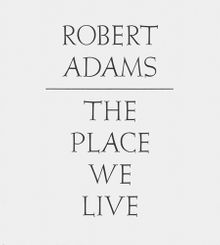 Robert Adams: The Place We Live
Robert Adams: The Place We Live
Published by Steidl.
PUBLISHER
Steidl
BOOK FORMAT
Slip, clth, 3 vols, 9.75 x 11.75 in. / 640 pgs / illustrated throughout.
PUBLISHING STATUS
Pub Date 4/30/2014
Out of stock indefinitely
DISTRIBUTION
D.A.P. Exclusive
Catalog: FALL 2014
PRODUCT DETAILS
ISBN 9783869305332 TRADE
List Price: $250.00 CAD $335.00
AVAILABILITY
Not available
STATUS: Out of stock indefinitely. |
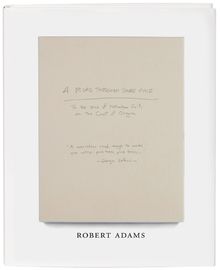 Robert Adams: A Road Through Shore Pine
Robert Adams: A Road Through Shore Pine
Published by Fraenkel Gallery.
PUBLISHER
Fraenkel Gallery
BOOK FORMAT
Hardcover, 9.75 x 11.75 in. / 42 pgs / illustrated throughout.
PUBLISHING STATUS
Pub Date 9/30/2014
Out of stock indefinitely
DISTRIBUTION
D.A.P. Exclusive
Catalog: SPRING 2015 p. 109
PRODUCT DETAILS
ISBN 9781881337409 TRADE
List Price: $45.00 CAD $60.00 GBP £40.00
AVAILABILITY
Not available
STATUS: Out of stock indefinitely. |
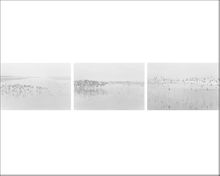 Robert Adams: Light Balances / On Any Given Day in Spring
Robert Adams: Light Balances / On Any Given Day in Spring
Published by Matthew Marks Gallery/Fraenkel Gallery.
PUBLISHER
Matthew Marks Gallery/Fraenkel Gallery
BOOK FORMAT
Slip Paperback 2 vols., 10.25 x 8 in. / 82 pgs / 87 bw.
PUBLISHING STATUS
Pub Date 6/30/2013
Out of print
DISTRIBUTION
D.A.P. Exclusive
Catalog: SPRING 2013 p. 92
PRODUCT DETAILS
ISBN 9781880146620 FLAT40
List Price: $40.00 CAD $50.00
AVAILABILITY
Not available
STATUS: Out of print | 00/00/00 For assistance locating a copy, please see our list of recommended out of print specialists |
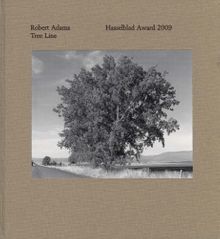 Robert Adams: Tree Line
Robert Adams: Tree Line
The Hasselblad Award 2009
Published by Steidl.
PUBLISHER
Steidl
BOOK FORMAT
Clth, 10 x 11 in. / 116 pgs / illustrated throughout.
PUBLISHING STATUS
Pub Date 5/31/2010
Active
DISTRIBUTION
D.A.P. Exclusive
Catalog: SPRING 2010 p. 92
PRODUCT DETAILS
ISBN 9783865219565 TRADE
List Price: $40.00 CAD $54.00
AVAILABILITY
Out of stock
STATUS: Out of stock Temporarily out of stock pending additional inventory. |
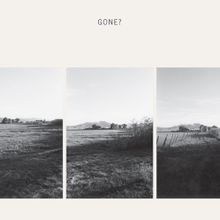 Robert Adams: Gone
Robert Adams: Gone
Published by Steidl Photography International.
PUBLISHER
Steidl Photography International
BOOK FORMAT
Clth, 10.25 x 10.25 in. / 116 pgs / 119 bw.
PUBLISHING STATUS
Pub Date 3/31/2010
Active
DISTRIBUTION
D.A.P. Exclusive
Catalog: SPRING 2010 p. 92
PRODUCT DETAILS
ISBN 9783865219176 TRADE
List Price: $55.00 CAD $75.00
AVAILABILITY
In stock
in stock $55.00 Free Shipping UPS GROUND IN THE CONTINENTAL U.S. |
 Robert Adams: Questions for an Overcast Day
Robert Adams: Questions for an Overcast Day
Published by Matthew Marks Gallery/Fraenkel Gallery.
The leaves on the trees appear perforated, the precise cause of which is unknown. The artist likens the particular pattern of erosion on each leaf to hieroglyphics, reading in them a unique "calligraphy of disaster." About them, Adams writes:
What would account for the condition of the leaves--
drought, insects, rocky ground, disease, herbicide, wind?
Are the leaves beautiful?
As with the artist's earlier photographs--of suburban detritus, tract housing under construction and devastated, clear-cut forests--the viewer is invited to find beauty as it coexists with the imperfection, even destruction, of the present day.
PUBLISHER
Matthew Marks Gallery/Fraenkel Gallery
BOOK FORMAT
Paperback, 6.75 x 9.5 / 74 pgs. / 33 tritone.
PUBLISHING STATUS
Pub Date 2/1/2008
Out of print
DISTRIBUTION
D.A.P. Exclusive
Catalog: SPRING 2008 p. 191
PRODUCT DETAILS
ISBN 9781880146460 FLAT40
List Price: $40.00 CAD $50.00
AVAILABILITY
Not available
STATUS: Out of print | 00/00/00 For assistance locating a copy, please see our list of recommended out of print specialists |
 Robert Adams: Along Some Rivers
Robert Adams: Along Some Rivers
Photographs and Conversations
Published by Aperture.
Text by Richard B. Woodward.
PUBLISHER
Aperture
BOOK FORMAT
Hardcover, 5.5 x 8.25 in. / 96 pgs / 28 duotone.
PUBLISHING STATUS
Pub Date 5/1/2006
No longer our product
DISTRIBUTION
Contact Publisher
Catalog:
PRODUCT DETAILS
ISBN 9781597110044 TRADE
List Price: $24.95 CAD $27.50
AVAILABILITY
Not Available
 Robert Adams: Beauty in Photography
Robert Adams: Beauty in Photography
Essays in Defense of Traditional Values
Published by Aperture.
Essays by Robert Adams.
PUBLISHER
Aperture
BOOK FORMAT
Paperback, 5.5 x 8.25 in. / 112 pgs / 23 reproductions throughout.
PUBLISHING STATUS
Pub Date 6/15/2005
No longer our product
DISTRIBUTION
Contact Publisher
Catalog:
PRODUCT DETAILS
ISBN 9780893813680 TRADE
List Price: $16.95 CAD $20.00
AVAILABILITY
Not Available
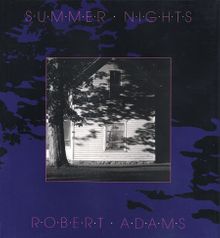 Robert Adams: Summer Nights
Robert Adams: Summer Nights
Published by Aperture.
Photographs by Robert Adams.
PUBLISHER
Aperture
BOOK FORMAT
Hardcover, 8.5 x 9.25 in. / 48 pgs / 40 reproductions throughout.
PUBLISHING STATUS
Pub Date 6/15/2005
No longer our product
DISTRIBUTION
Contact Publisher
Catalog:
PRODUCT DETAILS
ISBN 9780893811419 TRADE
List Price: $14.98 CAD $17.50
AVAILABILITY
Not Available
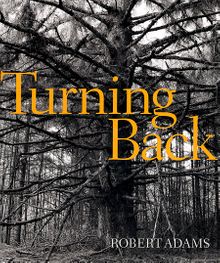 Robert Adams: Turning Back
Robert Adams: Turning Back
A Photographic Journal of Re-Exploration
Published by Fraenkel Gallery/Matthew Marks Gallery.
Photographs by Robert Adams.
PUBLISHER
Fraenkel Gallery/Matthew Marks Gallery
BOOK FORMAT
Clothbound, 9.75 x 11.75 in. / 234 pgs / 164 tritone.
PUBLISHING STATUS
Pub Date 5/15/2005
Out of print
DISTRIBUTION
D.A.P. Exclusive
Catalog: SPRING 2005 p. 10
PRODUCT DETAILS
ISBN 9781933045016 TRADE
List Price: $65.00 CAD $75.00
AVAILABILITY
Not available
STATUS: Out of print | 00/00/00 For assistance locating a copy, please see our list of recommended out of print specialists |
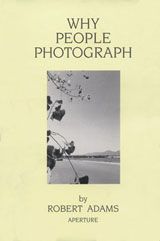 Robert Adams: Why People Photograph
Robert Adams: Why People Photograph
Selected Essays and Reviews
Published by Aperture.
Text and essays by Robert Adams.
PUBLISHER
Aperture
BOOK FORMAT
Paperback, 5.5 x 8.25 in. / 189 pgs / 29 reproductions throughout.
PUBLISHING STATUS
Pub Date 6/15/2005
No longer our product
DISTRIBUTION
Contact Publisher
Catalog:
PRODUCT DETAILS
ISBN 9780893816032 TRADE
List Price: $16.95 CAD $20.00
AVAILABILITY
Not Available
Robert Adams: Commercial/Residential
Landscapes Along the Colorado Front Range 1968-1972
Published by Roth Horowitz, LLC/PPP Editions.
Photographs by Robert Adams.
At about the time I took the pictures I read an interview with Raoul Coutard, Jean-Luc Godard's cameraman. In it Coutard noted with gratitude that 'daylight has an inhuman faculty for always being perfect.' It is one of the mercies, I believe, by which each of us is allowed to live.” --Robert Adams, from Commercial/Residential
PUBLISHER
Roth Horowitz, LLC/PPP Editions
BOOK FORMAT
Hardcover, 9 x 8 in. / 43 pgs / 40 tritone.
PUBLISHING STATUS
Pub Date 6/2/2003
Out of print
DISTRIBUTION
D.A.P. Exclusive
Catalog: FALL 2003
PRODUCT DETAILS
ISBN 9780971548015 FLAT40
List Price: $55.00 CAD $65.00
AVAILABILITY
Not available
STATUS: Out of print | 11/28/2010 For assistance locating a copy, please see our list of recommended out of print specialists |
 Robert Adams: The New West
Robert Adams: The New West
Published by Walther König, Köln.
Photographs by Robert Adams. Contributions by Thomas Weski. Text by John Szarkowski.
PUBLISHER
Walther König, Köln
BOOK FORMAT
Hardcover, 10 x 9.25 in. / 136 pgs / 56 duotone
PUBLISHING STATUS
Pub Date 2/2/2001
No longer our product
DISTRIBUTION
D.A.P. Exclusive
Catalog: FALL 2000
PRODUCT DETAILS
ISBN 9783883754611 SDNR30
List Price: $55.00 CAD $65.00
AVAILABILITY
Robert Adams: California
Views by Robert Adams of the Los Angeles Basin, 1978-1983
Published by Fraenkel Gallery/Matthew Marks Gallery.
Introduction by Robert Hass.
PUBLISHER
Fraenkel Gallery/Matthew Marks Gallery
BOOK FORMAT
Hardcover, 11.25 x 9.5 in. / 132 pgs / 57 tritone
PUBLISHING STATUS
Pub Date 11/2/2000
Out of print
DISTRIBUTION
D.A.P. Exclusive
Catalog: SPRING 2001
PRODUCT DETAILS
ISBN 9781881337102 TRADE
List Price: $45.00 CAD $55.00
AVAILABILITY
Not available
STATUS: Out of print | 10/23/2001 For assistance locating a copy, please see our list of recommended out of print specialists |
PUBLISHER
Roth Horowitz, LLC
BOOK FORMAT
Hardcover, 9 x 8 in. / 20 pgs / 17 tritone.
PUBLISHING STATUS
Pub Date 1/2/1999
No longer our product
DISTRIBUTION
D.A.P. Exclusive
Catalog: FALL 1999
PRODUCT DETAILS
ISBN 9781564660688 SDNR30
List Price: $75.00 CAD $90.00
AVAILABILITY
Not available
